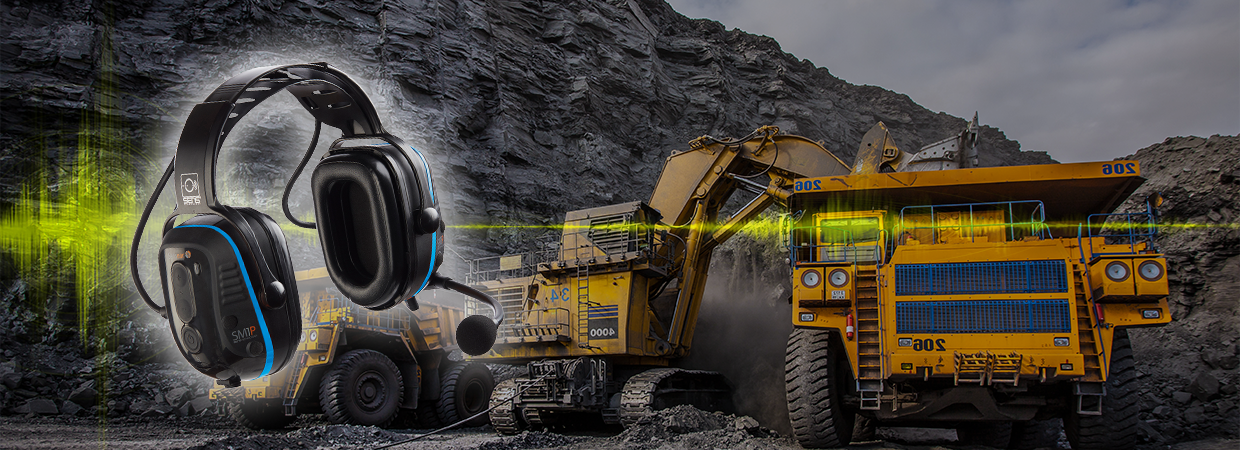- Home
- Blog
- High-Noise Workplace Safety
- What to Consider When Providing a Safe and Productive Work Environment

What to Consider When Providing a Safe and Productive Work Environment
The promise of noise-canceling headphones can seem like a magic bullet when it comes to protecting the hearing of employees that work around loud noises. That is, however, until you start to think about the health and safety risks that come with looking after a workforce unable to hear you or each other.
Active noise-canceling headphones should not be used in work environments as they block out almost all sounds, including those that may be needed. This may prevent workers from hearing important noises such as alarms and speech or warnings from colleagues. Typical noise reduction earmuffs or headsets have a similar outcome, as they will likely block out most of those important or needed sounds as well.
Fortunately, there are alternatives that will allow you to provide a productive, peaceful work environment while maintaining health and safety standards. Investing in robust electronic hearing protection is a cutting-edge solution to noise problems that will help address factors such as:
Situational Awareness
Recent developments in digital noise suppression technologies mean that they now come with a situational awareness function. This technology will quickly alert them to dangers such as moving vehicles or equipment via audio cues. Some industrial hearing protectors also come with technology that provides 3D sound or directional sound, which simply means you can tell in which direction the noise or sound is coming from while wearing the hearing protector. This can be a huge safety factor in many environments. There are even headsets with the technology to recognize and separate speech, which allows them to engage in face-to-face conversations in very high noise environments without removing their hearing protection.
Digital Communication
Headsets that offer digital communication give users protection from disruptive ambient noises while allowing them to converse with team members and hear the sounds of their own voice. This is made possible by the built-in electronics and software using DSP (Digital Signal Processing) technology to identify a number of different noise categories, suppressing unwanted sounds and boosting others such as speech.
Communication Capabilities
Generally speaking, active noise-canceling ear protection is perfectly safe to use in environments where users do not need to communicate with other people. This includes office workers or passengers on airplanes, for example.
However, manual workers usually need to maintain a consistent level of communication in order to complete their given tasks. And, of course, disrupted communication can even be dangerous.
If you’re concerned about providing hearing protection that will not hinder your employees’ ability to communicate with each other, you may want to consider investing in enhanced communication technologies.
If you operate in an environment in which complete noise cancellation equipment is not necessary, you may also consider investing in high-noise communication technologies that feature speech enhancement and noise suppression capabilities. These allow for face-to-face communication and filter ambient sound so that it does not surpass a safe level of decibels.
Wireless Connectivity
Some digital hearing protection equipment features technology that can help your team communicate with each other if they are within a certain range. For example, some digital noise suppression noise-canceling Bluetooth® headsets have built-in two-way radio short-range capability and /or can be paired with smartphones and other wireless Bluetooth® devices that offer cutting-edge communication solutions. What’s more, they are easy to use and set up.
Configurable to a Specific Industry
Different workplaces and industries produce different kinds of noise and have different requirements from their employees. In this way, manufacturers of noise suppression/noise-canceling hearing protective and communication devices, such as Sensear have included features that are programmable and adaptable to the needs of specific industries. Workers in the oil and gas industry, for example, can adjust their headsets or headphones to suit their needs, while those in a manufacturing plant can set their own noise suppression experience, with our programmable volume limiter.
Choosing the right industrial headset can be a head-spinning challenge. With so many products on the market claiming to offer so many different benefits, the process can quickly become overwhelming. Here’s a free download guide on how to choose the best headsets for your industry, your needs, and your environment ...







